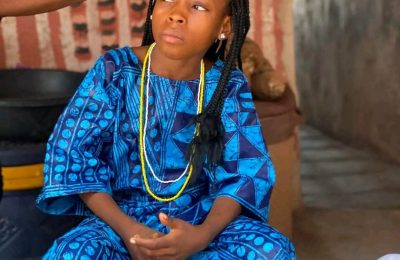AFRICA’S music scene is no longer just a regional sensation, it has become the pulse of global pop culture.
As African music continues to enchant global audiences, Spotify Wrapped 2024 unveils the diverse range of genres that people now enjoy all over the world. While Afrobeats and Amapiano often dominate headlines, this year’s Wrapped data sheds light on other emerging sounds that define Africa’s music.
Reimagined histories
Hiplife and Highlife from Ghana, rooted in the country’s rich cultural history, remain highly exported due to their fusion of traditional Highlife melodies with contemporary beats that keep them globally relevant.
Artistes like King Paluta, Fameye, and KiDi are leading the way in blending traditional Highlife melodies with modern sounds. Fameye’s Very Soon and King Paluta’s Aseda—a heartfelt song of gratitude-are examples of how the genre is evolving. Their fresh take on Highlife has helped drive a 54 per cent increase in global streams, a sign of the genre’s appeal to both local and international audiences.
In Kenya, Arbantone, mainly characterised by beats from samples of Kenyan old school hits. This sound combines elements of Gengetone and old Jamaican riddims, led by a wave of young rappers who bring the raw lyricism of Gengetone. Captivating young audiences, Arbantone is quickly rising on local music charts.
Arbantone grew significantly in 2024, partially thanks to viral dance challenges on social media. Artists like Dyana Cods’ ‘Set It’, harnessed the genre’s infectious beats and catchy lyrics to connect with her fans. The song became one of the most popular Arbantone tracks in Kenya, securing the number three most streamed Arbantone track in Kenya as revealed by the 2024 Spotify ‘Wrapped’ data.
Embracing experimental sounds
Nigeria’s Alté is becoming more popular abroad where it’s now the country’s fourth-most exported genre in
2024. Pronounced ‘uhlteh’, a shorthand for alternative, you may have heard the experimental mix of Afrobeats, R&B, and hip-hop, with electronic influences on tracks like Soh-Soh by Odeal or Amaarae’s Wanted. The likes of Amaarae, Lady Donli and Odunsi (The Engine) paved the way for a new generation of artists like DEELA, DETO BLACK and brazy to tap into Alté’s rebellious, bold and unconventional brand of self-expression.
The global success of Alté-influenced musicians like Tems, Rema and Odeal symbolises how the genre is taking its place in mainstream music culture. Countries like Ghana have embraced the sound with over 60 billion Spotify streams, and Alté now has 41 per cent more global plays than it did a year ago.
South Africa’s Afro House, known for its deep rhythms and soulful vocals, has become a favourite in electronic music circles around the world. DESIREE and DJ Shimza have been instrumental in influencing the growth of Afro House. DESIREE sets blend African rhythms with modern electronic sounds, while DJ Shimza’s electrifying global performances have propelled the genre to new heights.
As more artistes trom around the world incorporate African sounds into their music, the genre has influenced global dance floors.
Read Also: A wake-up call for social welfare reform
Household names
Afrobeats continues to lead Africa’s music revolution, evolving rapidly and driving the movement forward. In 2024, the genre saw a significant 28 per cent increase in global streaming. Tracks like ‘Santa’ by Ayra Starr, Rauw Alejandro, and Russian highlight the genre’s versatility, while ‘Calm Down’ by Rema and Selena Gomez underscore its widespread international appeal. Collaborations like Skillibeng and Tyla’s Jump, Gunna showcase Afrobeats’ adaptability and its growing dominance on global charts.
Amapiano, meanwhile, has emerged as Africa’s fastest-growing genre, with a phenomenal 59 per cent increase in global streaming in 2024. Another sign that the future of global music will undoubtedly feature even more beats, grooves, and melodies from the continent.







